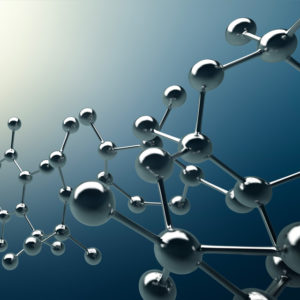Product Reliability
Home » Our Techniques » Physical/Chemical Characterization » Product Reliability
Product reliability testing can help to predict future behavior during the complete life cycle of the product, component or material under test. In combination with the measurement of relevant parameters and the use of appropriate analytical methods, it is also possible to identify failure modes.
Environmental testing simulates different combinations of temperature, humidity and atmospheric pressure. It includes temperature testing, temperature and humidity testing, thermal cycling/shock testing, and altitude (low air pressure) testing.
Outdoor and industrial environmental testing simulates different conditions of contact with sand, dust, rain, water, chemicals, exposure to solar and UV radiation, and potential corrosion by liquids or gases.
In cases where environmental reliability testing leads to unacceptable degradation or failure, identification of the root cause can enable design or material changes in order achieve the desired lifetime or performance.
Environmental simulation*
- High/low temperature (-100°C to 300°C)
- Temperature and humidity (0°C to 100°C) (<<5%RH to 100%RH)
- Power Temperature Cycling (PTC) (change rate >10 min)
- Thermal cycling (-70°C to 150°C)
- Thermal shock (cold -65°C and 0°C; warm 60°C and 200°C)
- Highly Accelerated Stress Test (HAST)/corrosion testing (between 105°C and 143°C; between 75 and 100%RH)
- Solar/UV simulation (solar up to 1120 W/m2; UV test UV-A or UV-B)
- Corrosive gas exposure
- Ingress protection testing (water and dust ingress protection)
- Salt mist/salt spray testing
- UV-C irradiation
- Impact testing
* Optional in-situ testing is also available: Event detection (Low resistance), real time logging of current/voltage/resistance/lumen output (I/V/L/R vs. time) etc.
Designing Reliability Test Plans
Reliability testing and verification of your product is only useful if it is based on good lifetime data analysis. The correlation between an accelerated reliability test and the real lifetime of the product is very important. Prior to designing a reliability test plan, it is important (and necessary) to address the following questions:
- Which types of test(s) are relevant for my product?
- How long do I need to test for?
- What stress level should be used during the reliability test itself?
- What are the pass/fail criteria?
The data obtained during (and after) the reliability test can be transferred into various software packages for analysis and further interpretation. The test results can be extrapolated into predicted remaining lifetime of the product.
If you need a quick statistical analysis, development of a full reliability test program or something in between, then we can help you. Our lab equipment, staffing and consulting for test plan design can be fully customized to meet your specific needs.
Highly Accelerated Lifetime Test (HALT)
HALT is an accelerated product reliability test method focused on finding design or component weaknesses in products. It helps to shorten the product development process and failures can be avoided in advance, before they become expensive field issues. With HALT, a product is subject to a series of overstresses to accelerate fatigue in the parts, i.e. the samples are tested outside of the normal operating specifications. It is a test to the point of failure.
Multiple Environmental Over Stress Testing (MEOST)
MEOST is used to prove the robustness of your product before it goes to the market. It is a test method that stresses the product as far as possible beyond the design specification, but within the known destructive limits (defined with a HALT test). A combination of stresses is applied to create interactions that can lead to product failures. MEOST makes use of environmental stresses in combination with dynamic electrical in- and output parameters (input voltage, frequency, mains-dips, output current/load).
Compatibility Testing
- Surface degradation (discoloration, change of texture, etc.)
- Chemical compatibility
- Gas exposure testing
Ideal Uses
- Environmental simulation for temperature, humidity, UV, corrosion
- Finds design or component weaknesses in products
- Proves the robustness of your product before it goes to the market
Strengths
- Wide dimensional range can be addressed
- Operational and non-operational
- Highly flexible infrastructure (process cooling water, electrical power up to 125 A, etc.)
- Predictive tests for future behavior of materials, components, complete products
- Failures can be investigated thoroughly via EAG’s materials analysis expertise
- EAG’s reliability lab expert’s advise customers about the execution of the right environmental test
Limitations
- Longer timescales for testing to be done properly (acceleration factor has its limits)
- Further analyses of failed samples may require a complex analytical approach
Environmental Simulation Technical Specifications
- Temperatures: between -100°C and 300°C
- Humidity: between <<5%RH and 100%RH (depending on the temperature)
- Typical gases used for exposure testing: H2S, SO2, NO2, Cl2, NH3 (or combinations)
- Typical chemicals used for compatibility testing: cleaning agents, disinfection agents, pesticides
Would you like to learn more about using Product Reliability?
Contact us today for your Product Reliability needs. Please complete the form below to have an EAG expert contact you.
